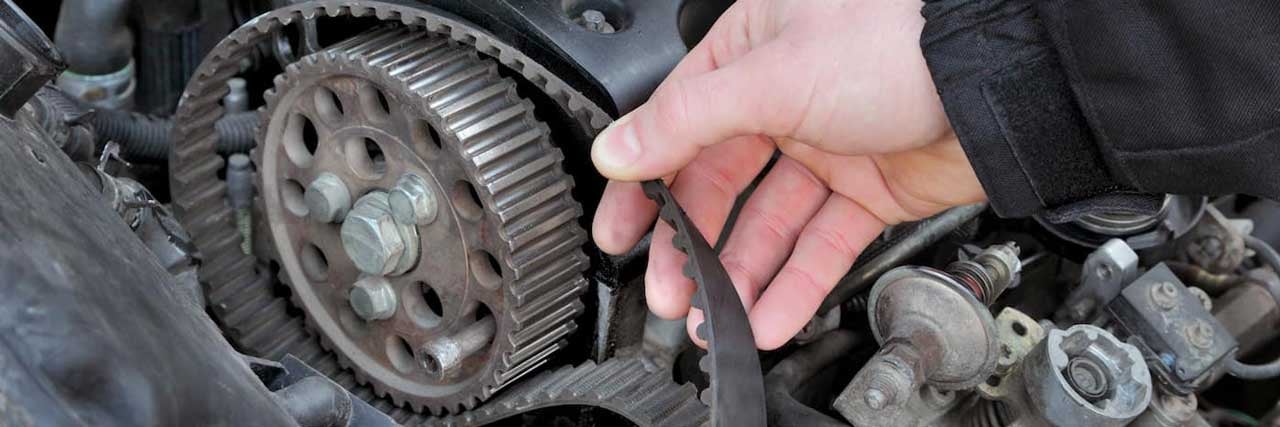Timing Belt Service

Timing Belt Replacement and Service at Stanley Auto Group
The engineers behind your engine worked hard to make sure that it’s calibrated correctly. This ensures that you have the best possible gas mileage and power so that you can truly enjoy your drive. When your timing belt begins to wear down though, you might find that your vehicle doesn’t handle nearly as well as it used to. When you need a repair near Dallas, Lubbock, or Waco, you’re going to want to visit one of our Stanley Auto Group locations today.Understanding Your Timing Belt
To say your timing belt has an important role would be an incredible understatement, as your engine won’t be able to run without it. Since it relies on precise ratios, it needs a way to keep everything in line, and in sync. This is where your timing belt comes in, as it has hard teeth that interlock with the cogwheels of both your crankshaft and your camshafts. This makes sure that they’re moving together, and that your engine intake and exhaust valves open and close at just the right time. When things go wrong, you’ll notice an immediate dip in performance, as your car won’t be able to get the proper combustion it needs. Your timing belt shouldn’t be confused with a timing chain, which does the same job but is made of metal instead of rubber.Signs of a Compromised Belt
Since your belt is made of rubber, it’s bound to run into problems over time. It’ll eventually wear down after prolonged use, which can leave you with symptoms like:- A noticeable decrease in your engine’s power
- Vibrating or shaking as you drive
- Your vehicle may begin to overheat
- You may have trouble starting your vehicle
- The check engine light may appear
- Your oil may begin to leak
- Squealing or rubbing noises from the belts
- A ticking noise can be heard coming from the engine
Solving the Problem
If the timing belt goes unchecked, it can cause tiny metal pieces to clash together in your engine, resulting in irreparable damage. Similarly, overheating can do the same thing to your vehicle, and is a symptom of a faulty timing belt. This means that you’ll want to get serviced as soon as you’re able. When you visit one of our locations, we’ll be able to check everything from your belt to the surrounding parts so that you don’t run into any issues later on. If you do end up needing a new timing belt, you can expect the replacement to be good for the next 60,000 to 100,000 miles on average. Luckily, this isn’t a repair you’ll have to worry about very often, as timing belts are designed to last for extended periods of time. While you’re at the dealership, you may want to consider getting your oil change, tire alignment, and more out of the way. This will make sure your vehicle has everything it needs for the road.A timing belt is a serious issue, so when you need reliable service, you’ll want to schedule ahead or stop by one of our Stanley Ford Auto Group locations.

